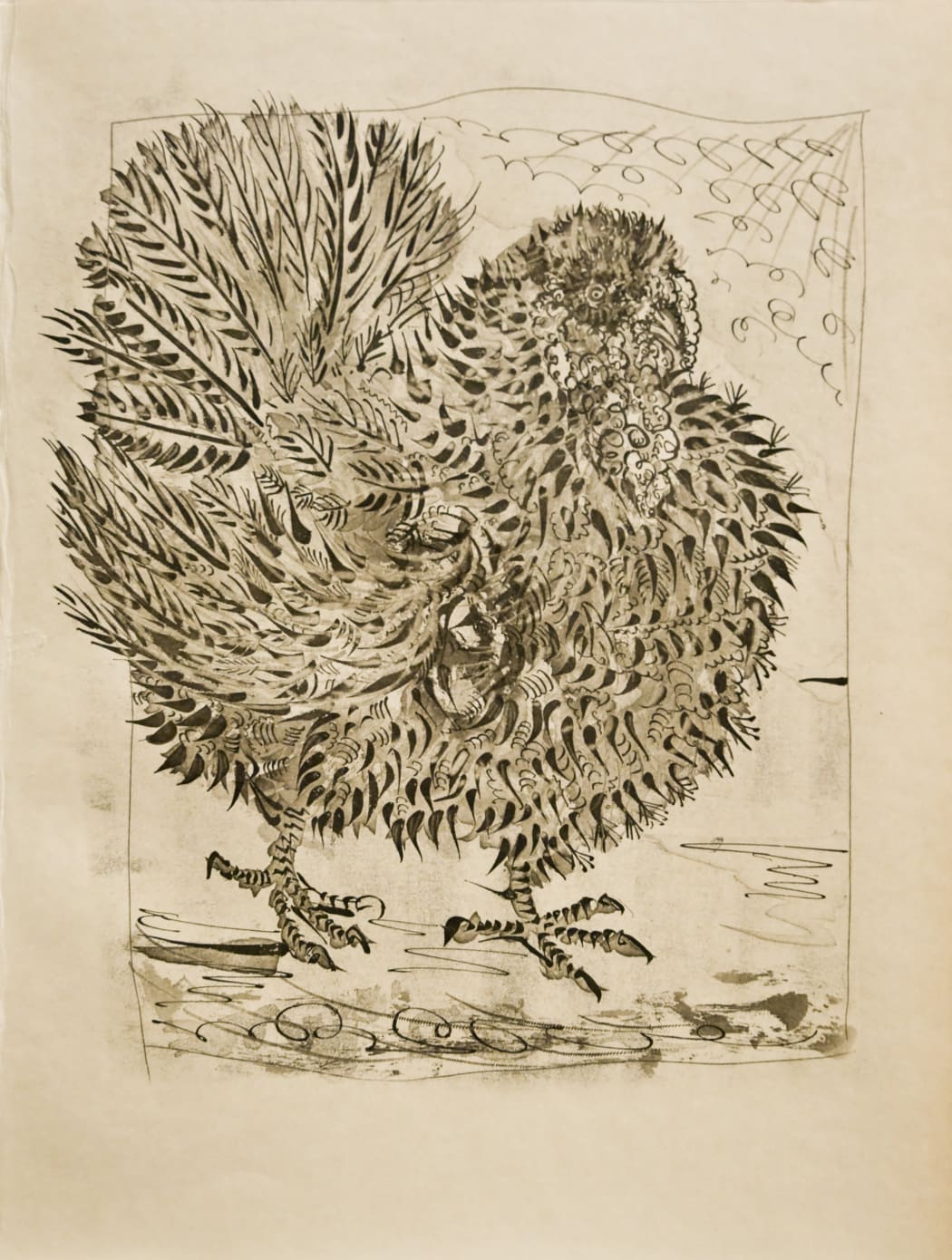
What comes up must come down. In the years following Picasso’s mid-1930s artistic peak, in which he was creating work in many forms with virtuosic speed and bubbling imagination, he experienced a temporary plateau in his painting interests.* He was separating from his wife, a new father but fading in his relationship with Marie-Therese, beginning yet another romance with Dora Maar, and, of course, the tensions of the impending war were already building in Europe. For an artist sensitive to the vibrations of life (for anyone, really), these reasons alone were enough to warrant a re-calibration. He struck inspiration – where else? – in the printer’s studio.
Picasso started working with the Parisian printer Roger Lacourière in 1933 and as we discussed a few weeks ago, it was in Lacourière’s studio that Picasso learned aquatint techniques. It may be that he took specific interest in the sugarlift variation for its painterly effects of tone and brushstroke – when he could not be inspired to put paint to canvas, he found, as William S. Lieberman concisely puts it, “a new method of expression.” Sugarlift was little used by Picasso’s contemporaries, but it was well-known to professional printers; a happy marriage of innovation and tradition, and a fitting technique for an artist who represents something of the same. Vollard was in agreement – after Picasso created a number of prints for the Suite Vollard in this style, he saw that Picasso had landed on something special. He eagerly asked the artist to use the technique and illustrate selections from a new publication (one that he would not live to see completed): the menagerie of Buffon’s Historie Naturelle. And just like that, what came down went up again.
For once, we’ll come right out and admit that this sentiment is not unique to Picasso’s life, but one familiar to us all – especially in the rollercoaster days of this past year. On this day in particular, we are visited by Picasso’s lucky Buffon turkey (lucky, that is, compared to other turkeys, seeing as she came around last year and is still with us today). Though this print was created in the same period as some of Picasso’s most highly emotional, intense works of art, Le dindon (B346) is rich, warm, and playful; a breath of clean country air, a full belly, a moment of childlike observation. A reset.
We hope that you have a safe, rejuvenating, enjoyable holiday – wherever you are, whoever you are with, turkey or not.
*Lieberman, William S. “Picasso: His Graphic Art,” The Bulletin of the Museum of Modern Art
Vol. 19, No. 2 (Winter, 1952). (pp. 3-17)
